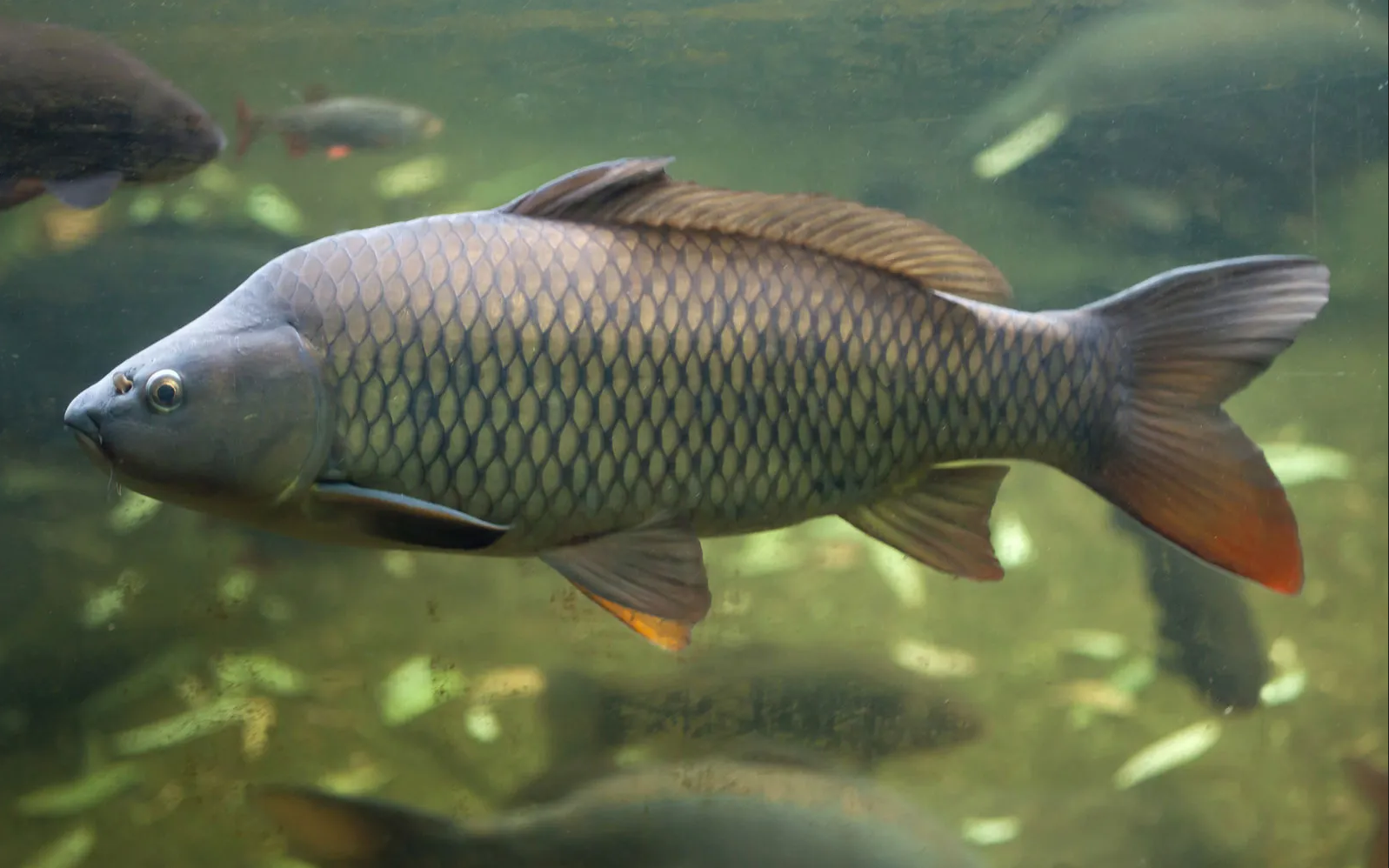Common carp are heavy-bodied fish with a distinctly arched back and deep, compressed body. They possess two barbels on each side of the mouth, which distinguish them from buffalo and other sucker species. The dorsal fin is remarkably long with a characteristic serrated spine at its leading edge.
Their coloration typically features an olive to brassy-olive back, bronze to golden sides with prominently dark-edged scales creating a crosshatched appearance, and a yellowish-white belly.
The fins are generally dusky with the tail and lower fins often displaying reddish or orange hues. Carp have thick, rubbery lips adapted for bottom feeding, and pharyngeal (throat) teeth for grinding food. The overall appearance is robust and powerful, reflecting their strong swimming ability and fighting qualities.

